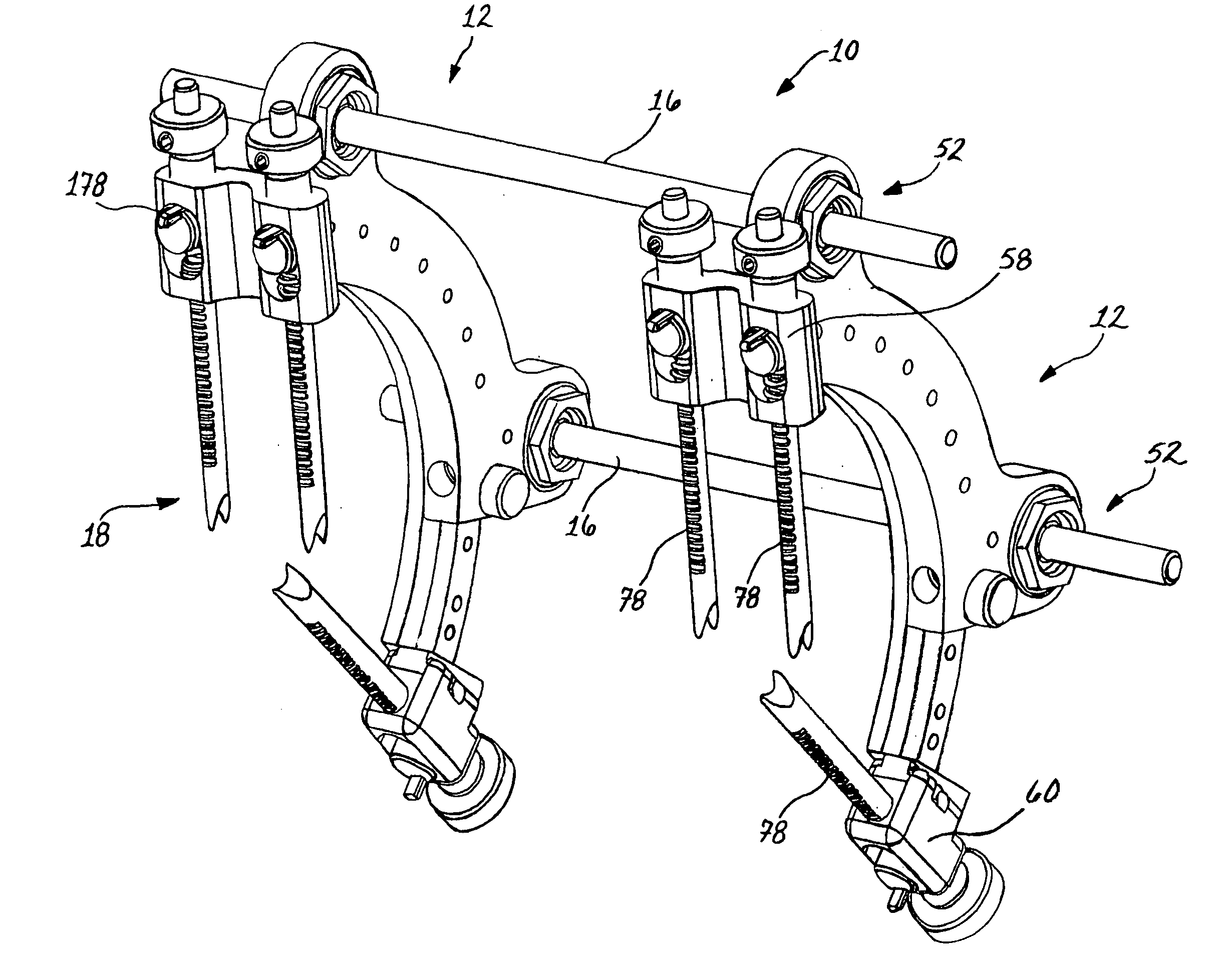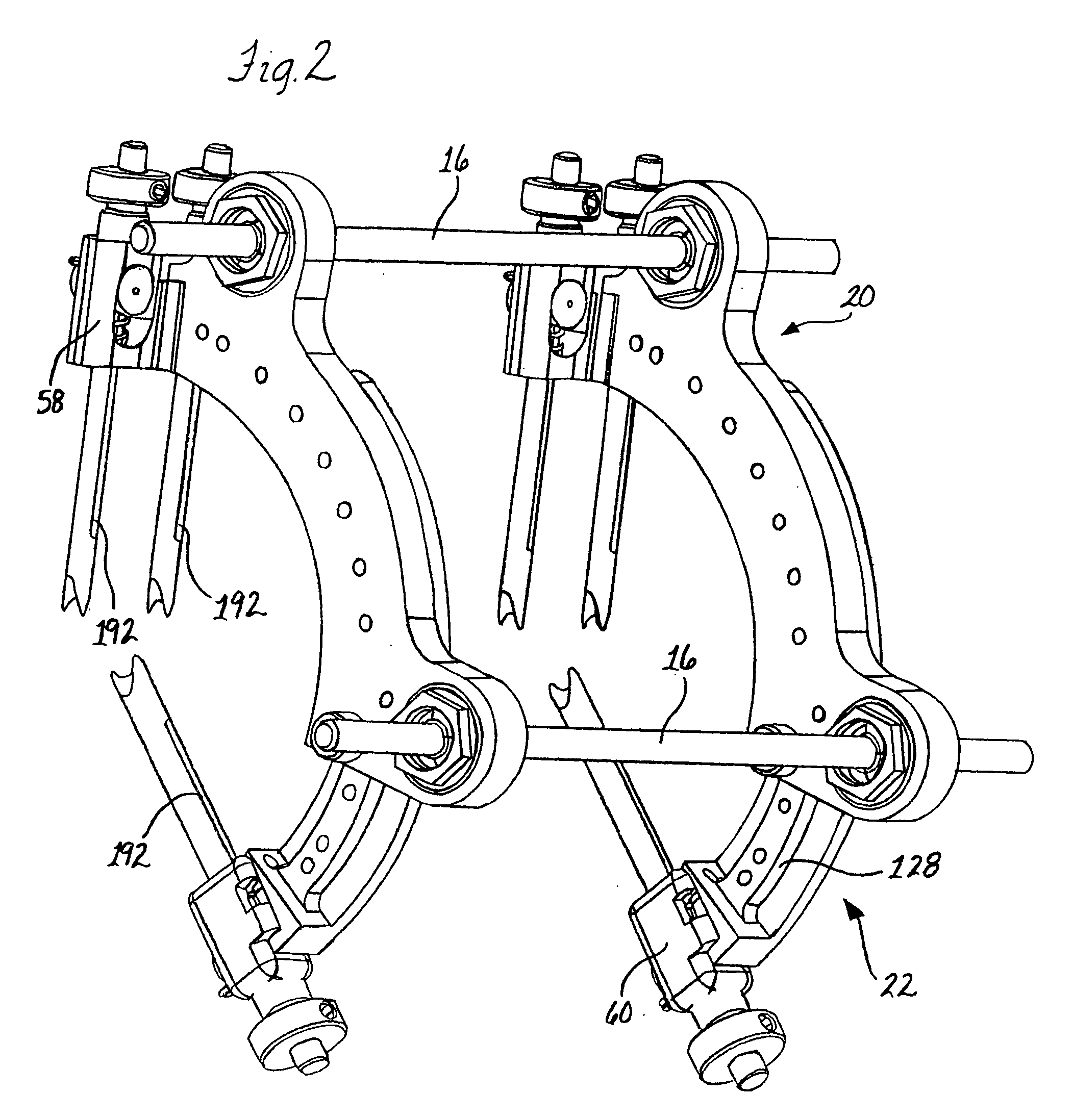External fixation apparatus and method
a technology apparatus, which is applied in the field of external bone fixation apparatus and method, can solve the problems of reducing the user's ability to sense or feel the level, difficult for the user to manipulate the arch into proper position and control the apparatus, and user's very little feel or sensory input, etc., to achieve the effect of simplifying the apparatus and less unwieldy us
- Summary
- Abstract
- Description
- Claims
- Application Information
AI Technical Summary
Benefits of technology
Problems solved by technology
Method used
Image
Examples
Embodiment Construction
[0067] In FIGS. 1 and 2, a bone fixation system generally designated 10 is depicted in its preferred form having bone fixators 12 for being pinned to a bone such as the tibia 14 with the fixators 12 interconnected by rods 16. The present system 10 including the fixators 12 is improved in several respects over prior external bone fixation systems. These improvements relate to the ease with which the bone pins 18 are applied to the bone 14 and the ability of the user to accurately sense proper anatomical placement of the pins 18 on the bone 14 and the level of force with which the pins 18 are engaged therewith.
[0068] Further improvements relate to other ergonomic aspects such as the size of the fixators 12 which keeps the user applying the pins 18 close to the application site again making proper application of the pins 18 easier and making the device more comfortable to wear over sustained periods of several days, as will commonly be the case with tibia fractures and the like. To th...
PUM
 Login to View More
Login to View More Abstract
Description
Claims
Application Information
 Login to View More
Login to View More - R&D
- Intellectual Property
- Life Sciences
- Materials
- Tech Scout
- Unparalleled Data Quality
- Higher Quality Content
- 60% Fewer Hallucinations
Browse by: Latest US Patents, China's latest patents, Technical Efficacy Thesaurus, Application Domain, Technology Topic, Popular Technical Reports.
© 2025 PatSnap. All rights reserved.Legal|Privacy policy|Modern Slavery Act Transparency Statement|Sitemap|About US| Contact US: help@patsnap.com



